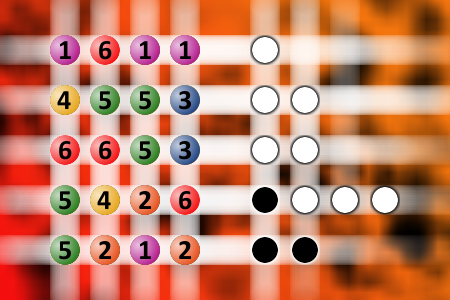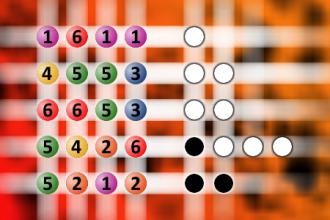Which is a winning combination of digits?
The computer chose a secret code (sequence of 4 digits from 1 to 6). Your goal is to find that code. Black circles indicate the number of hits on the right spot. White circles indicate the number of hits on the wrong spot.
Cold Water
John went to visit his 90 year old grandfather in a very secluded, rural area of Georgia.
After spending a great evening chatting the night away, John's grandfather prepared breakfast of bacon, eggs and toast. However, John noticed a film like substance on his plate, and questioned his grandfather asking, "Are these plates clean?"
His grandfather replied, "They're as clean as cold water can get them. Just you go ahead and finish your meal, Sonny!"
For lunch the old man made hamburgers. Again, John was concerned about the plates as his appeared to have tiny specks around the edge that looked like dried egg and asked, "Are you sure these plates are clean?"
Without looking up the old man said, "I told you before, Sonny, those dishes are as clean as cold water can get them. Now don't you fret, I don't want to hear another word about it!"
Later that afternoon, John was on his way to a nearby town and as he was leaving, his grandfather's dog started to growl, and wouldn't let him pass. John yelled and said, "Grandfather, your dog won't let me get to my car".
Without diverting his attention from the football game he was watching on TV, the old man shouted ... "COLDWATER, GO LAY DOWN!!!!"

